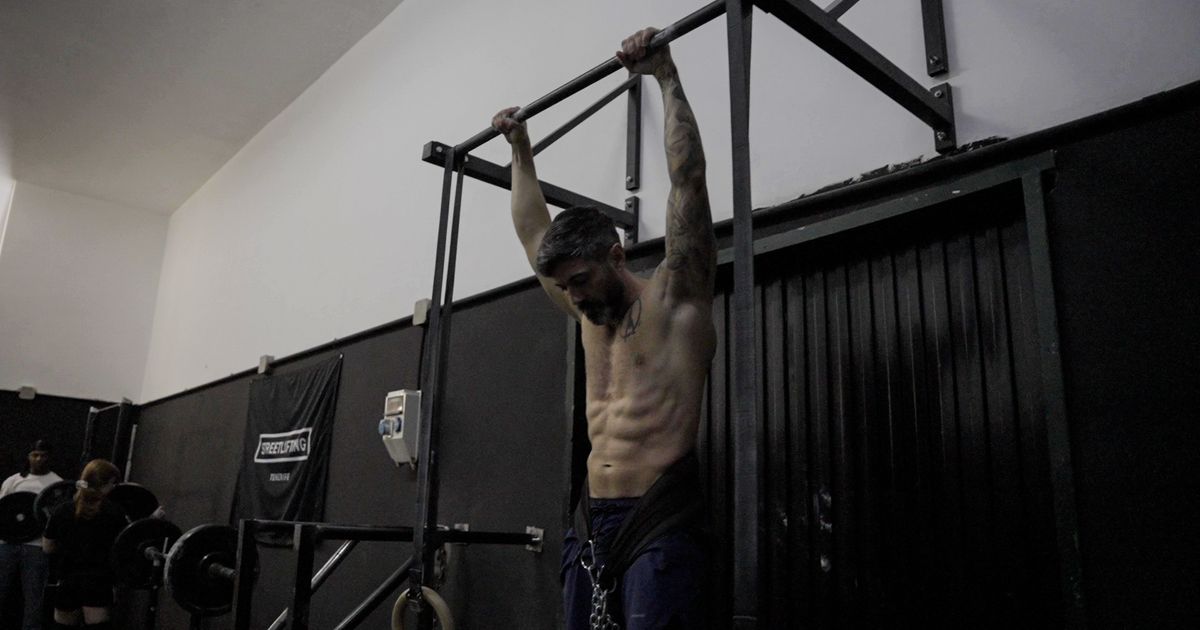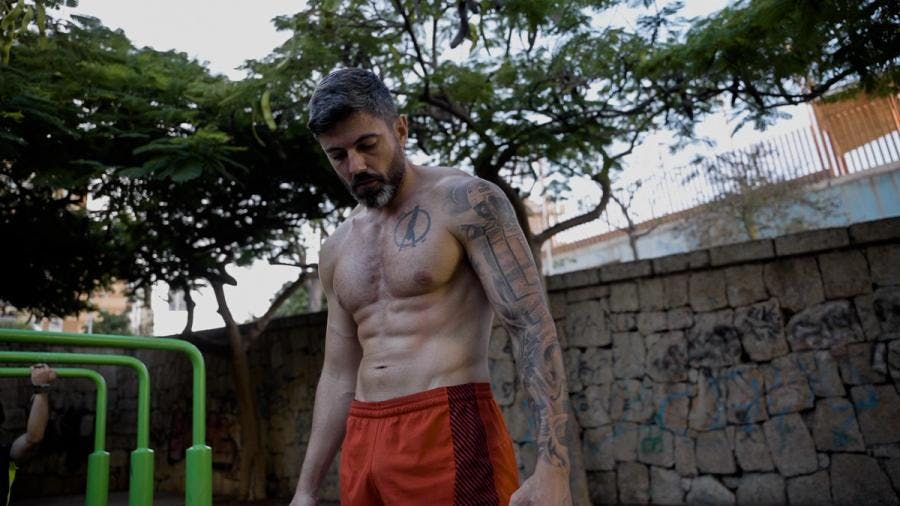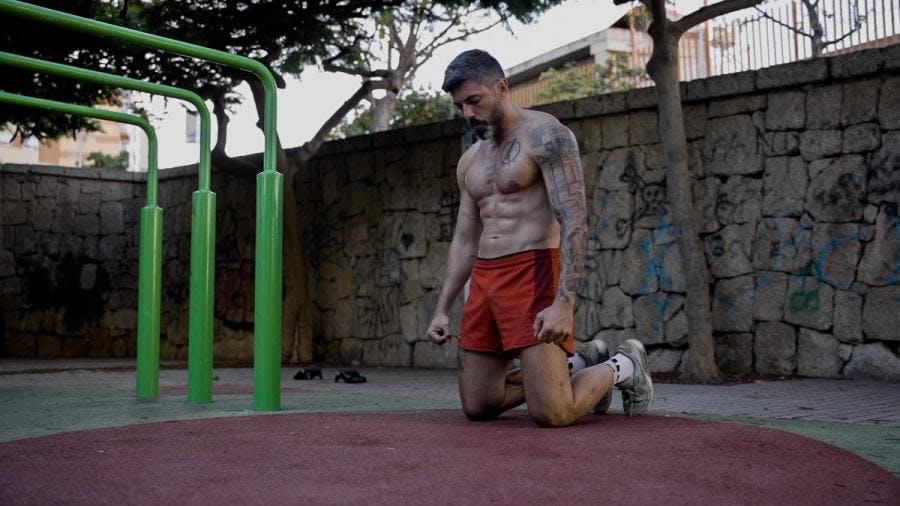
Calisteniapp 10' Workout Challenge
Start training or give your routines a boost with this 21-day Calisthenics challenge for all levels that will put your discipline to the test.

Normally when you start calisthenics, in the first few months, you usually see rapid and constant progress. But, from there, it is no longer so simple and there may be stages of stagnation for different reasons.
The most common way to try to overcome these plateaus is to improve training, changing exercises, trying to improve your planning, dedicate more days, try other routines, etc. But there are other reasons that can affect and to which you may not be paying as much attention. So in this article we are going to see those ignored reasons and how to solve them so that you can continue moving forward without problems.
One of the most limiting factors for progress in calisthenics is the body weight of the person practicing it. This is obvious, since it is the weight that you have to move in the different exercises. But in my experience there are people who refuse to see it or have a very biased view of reality.
For example, it has happened to me several times to try to make a person understand that if they want to progress they must reduce their body fat percentage, since this is extra weight that contributes nothing. Upon hearing this, the person seems like they don't want to talk about that topic, they try to change the conversation to training topics, or they refuse to accept that reality, implying that "I don't really have that much fat either" or making excuses like “My legs are very heavy”. No, it is not your legs that weigh you down a lot, it is the accumulated fat that you have in your body that weighs you down.

For a calisthenics athlete the optimal fat percentage is low. Obviously not reaching bodybuilder levels, but a low fat percentage in which the abs are easily visible. Normally, based on the general view that exists today in the fitness world regarding what each percentage of fat looks like, we would say that we are talking about between approximately 8 and 12%.
If your fat percentage is higher than that, you should know that it may be one of the limiting factors to your progress. If you are doing it intentionally because you want to bulk up and gain muscle that's fine, no problem, but you should know what that entails.
Therefore, what I recommend at this point is that you analyze objectively, being as honest as possible and avoiding biases if your fat percentage is really optimal or if you are a little overweight. You could even ask your training partners for honest opinions to make sure you're not being less than objective.
You may think this topic is trivial but it is much more important than it might seem.
In my experience there are many people who use very short rest times, or completely random rest times.
For example, if you are trying to progress in the muscle up and you start making attempts, but between each attempt you only leave 30 seconds of rest, it is clear that you are not going to perform well, and you are not going to progress at all.
You must know that the only thing short rest times are good for is to work on endurance and cardio. But to progress in hypertrophy, intermediate rest times are required and to progress in strength, long rest times are required. And when we talk about progressing in exercises such as planche, front lever, muscle up, etc. We are talking about progressing in strength, so you need long rest times.

I say that this is important because I have encountered it very frequently, people who say that they do not progress in an exercise and then it turns out that they attempt non-stop with little rest time between them.
There are people who don't like standing doing nothing in the park or in the gym, and their body asks them to do things all the time, not to rest without doing anything, but to progress in strength you have no other choice.
In fact, I recommend that you check the rest times with your watch or mobile phone so that you make them exact, because another factor that I often see is people who take random rest times. When they are alone and bored they rest little, but suddenly if they have someone to talk to and they are entertained, or if they are looking at social networks on their cell phone, they take breaks of 10 minutes or more. In this way, what you achieve is that your progress is also random, and you cannot work seriously to achieve your goals.
Get used to taking intermediate breaks when you are training hypertrophy, and long breaks when you are training strength and have no problem standing still doing nothing, use that time to visualize your next attempt, to meditate or for whatever you want.
I have already highlighted this error from time to time in other articles and I hope that many of you are already clear about it, but even so it never hurts to repeat it again. You must keep a record of your training and apply progressive overload.
If you always go to the park and do a routine that you have saved in a screenshot from 8 months ago and you always do it the same, with the same sets, repetitions and exercises, don't complain that you don't progress. If you always go to the park and do “a few dips, pull-ups and push-ups” always in the same sets of 10, 15 or 20 repetitions, without measuring anything at all or trying to improve any mark on anything, do not complain that you are not making progress. If you always go to the park and do the routine that one of your friends is doing, with their sets and repetitions, don't complain that you're not making progress.

It's as simple as using a note on your phone, a notebook, or an Excel on your computer to keep track of what routines you're doing, writing down whether you're successfully completing them or not, and making the necessary adjustments so you can gradually move forward. By increasing repetitions, or increasing sets, increasing the difficulty of the exercises, making more advanced progressions, or any combination of these factors, so that your routines in 2 months are more intense and difficult than your routines today, and they are not exactly the same.
I take this opportunity to tell you that in the new update that we are going to launch of Calisteniapp you will have a training calendar in which you will be able to record everything, with notes that you will be able to add to each routine to explain all the details that you consider necessary. These features will be available for free to all users so check them out.
I hope it helps you a lot, that you progress steadily towards your goals.
Yerai Alonso

Yerai Alonso
Cofundador de Calisteniapp, referente en calistenia y el street workout en Español. Con más de una década de experiencia, es creador de uno de los canales de YouTube más influyentes del sector. Autor del libro La calle es tu gimnasio, campeón de Canarias y jurado en competiciones nacionales e internacionales.
Join our newsletter
Learn everything you need to know about calisthenics

Start training or give your routines a boost with this 21-day Calisthenics challenge for all levels that will put your discipline to the test.

Calisteniapp is a symbol that represents our obsession with excellence, our essence, and the path we want to define for the next ten years.

Descubre los mejores ejercicios de antebrazo para calistenia. Mejora fuerza, agarre y control corporal con entrenamientos efectivos sin pesas.
